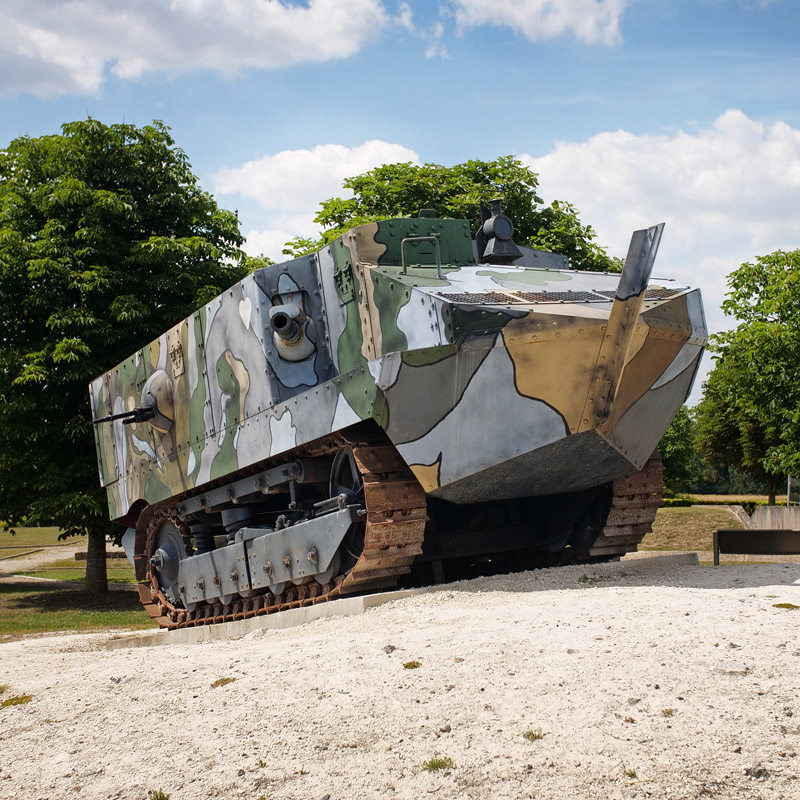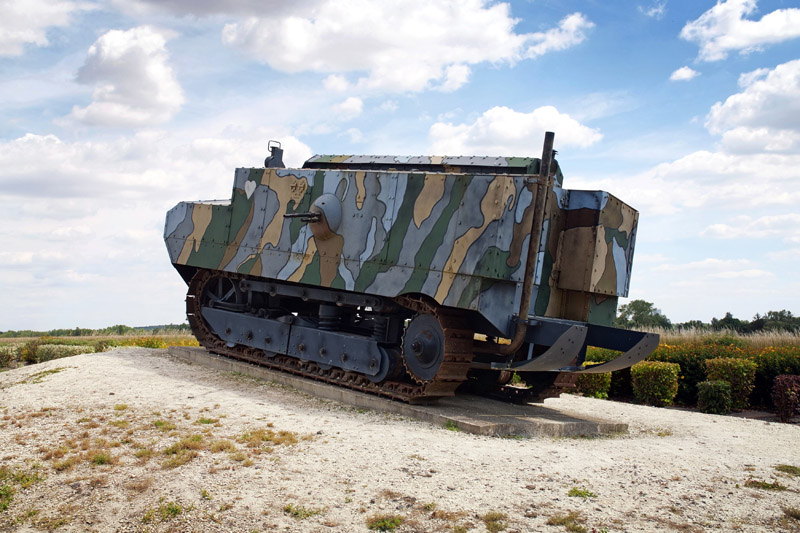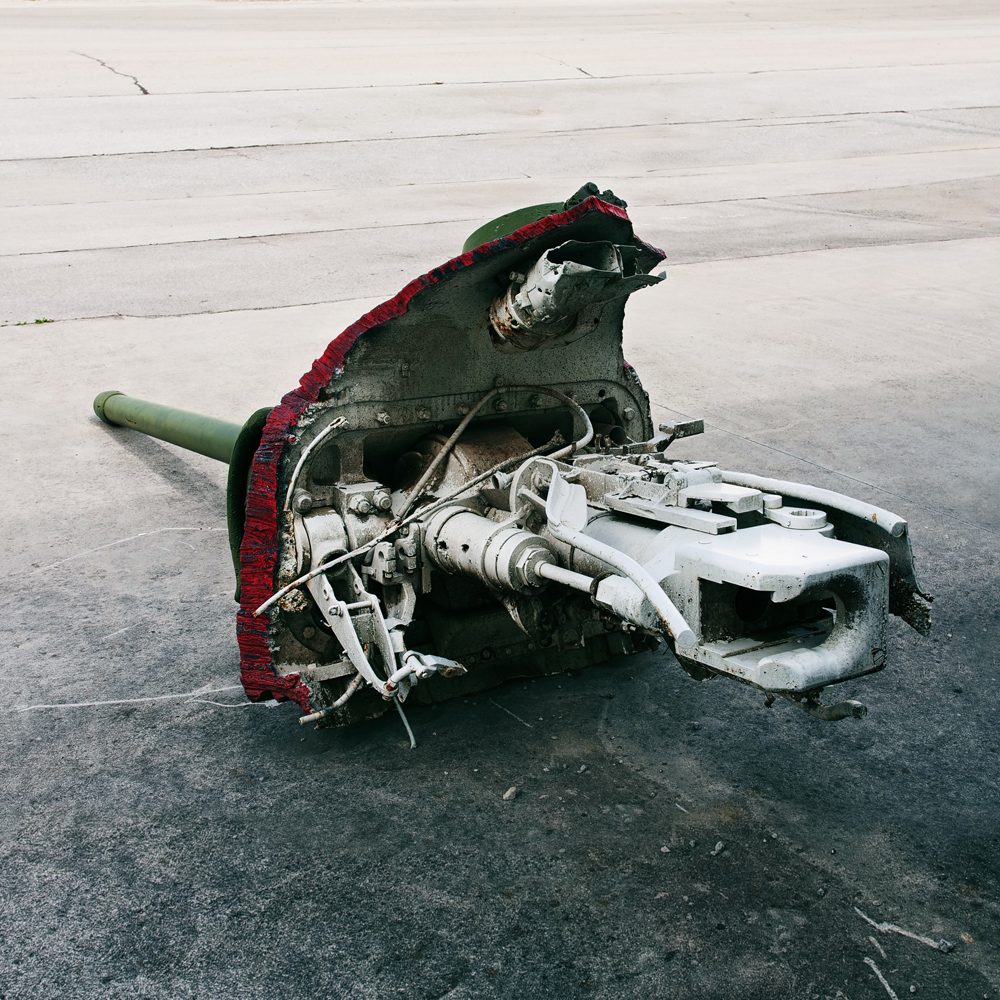Type: Heavy Tank
Nation: France
Period: World War 1
Location: Monument National des chars d‘assaut, Berry-au-Bac, France

The world’s other first tank
The Schneider CA1 was the first French tank. It was designed at the same time as the British Little Willie prototype, but since both countries treated their tank programmes as secrets which might change the course of the war, they were completely independent developments. France and Britain were facing the same problem on the Western Front and came up with very similar solutions. At the Schneider company of Le Creusot, engineer Eugène Brillié was tasked to build an armed and armoured tractor in July 1915, but his work got delayed for various reasons. It was only in December 1915 when Colonel Jean Baptiste Eugène Estienne came into the picture that the project could be continued at full steam. Estienne was an artillery officer with an interest in technology who had very clear ideas of his own. He immediately recognised the machine’s value and pushed for its further development. The first of the 400 production vehicles were finished by September 1916 – the same month the British threw their first Mark Is into battle.

Mobile artillery
Like Little Willie on the other side of the Channel, the 14-ton Schneider CA1’s chassis was based on a set of commercially available caterpillar tracks – in this case taken from the American Holt tractor (which the Germans would also use for their A7V). The “keel” on the Schneider’s boat-shaped nose was designed to cut through barbed wire and crush obstacles. This worked reasonably well, but the large overhang and the short tracks made trench-crossing very difficult: More often than not the tank would simply get stuck. The Saint-Chamond, a competing heavy tank which had been developed in parallel, was suffering from the same problem. By the time the French vehicles were ready, the Germans had already widened their trenches as a reaction to the British tank attacks and thus the French tank units – properly named „artillerie d‘assaut“ – were primarily used as mobile artillery support for the advancing infantry instead of leading breakthrough attacks on German trenches. As the last phase of the war became more mobile again, the CA1 remained in service until the Armistice of November 1918.

Typical discomfort
As with all other tanks of the Great War, the Schneider’s six-man crew had to endure atrocious conditions. The ceiling was extremely low so that most crew members needed to crouch or even lie down to fulfil their tasks. Similar to the British Mark I, the 60 hp four-cylinder petrol engine was mounted openly in the fighting compartment, while the fuel tank was installed in the front and tended to catch fire when hit. Fortunately, on later production CAs the fuel tank was relocated to the back and thicker armour was added. With 2–4 kilometres per hour the Schneider was anything but agile and its short-barreled 75 mm main gun offered only limited traverse. Most early tanks were not much more than unrefined armoured boxes on tracks, until the Renault FT with its revolutionary layout would set the new standard for more practical tank designs.

Disastrous debut
The Schneider CA1 first saw combat on the opening day of the Nivelle Offensive. On the morning of 16 April 1917, around 130 tanks advanced towards the German lines near Berry-au-Bac at the River Aisne. The attack however only achieved minor penetrations and by the end of the day more than half of the French vehicles had been disabled by German artillery or mechanical failure. In 1922 the National Tank Monument was erected at the site from where the tanks started rolling towards Juvincourt. The Schneider replica which can be seen there today was built by the France 40 Véhicules Association in Fismes at the Marne. In 2017 it was put on display to commemorate the 100th anniversary of the first French tank battle. The only surviving original CA1 is located at the Musée des Blindés in Saumur where it was restored to running condition in 2016/2017.


4 responses to “Char Schneider CA1 (Replica)”
[…] the vehicle’s trench-crossing capabilities – the very same problem that had plagued the French Schneider CA1, which had also been based on the Holt tracks. The A7V-U (U for “Umlaufketten” = all around […]
LikeLike
[…] to the long-standing 501ᵉ régiment de chars de combat, a unit that was initially equipped with Schneider CA1s and Renault FTs when it was founded in 1918. This regiment was the first to receive the AMX-30 in […]
LikeLike
[…] twice. During the Meuse-Argonne Offensive in November 1918 he was commanding the Renault FTs and Schneiders of the 1st Tank Brigade and in August/September 1944 he returned with the Shermans of his Third […]
LikeLike
[…] the second French tank ever to be fielded in May 1917. It was developed in parallel to the rival Schneider CA1, used the exact same Holt caterpillar tractor chassis and was also equipped with a 75 mm gun in a […]
LikeLike